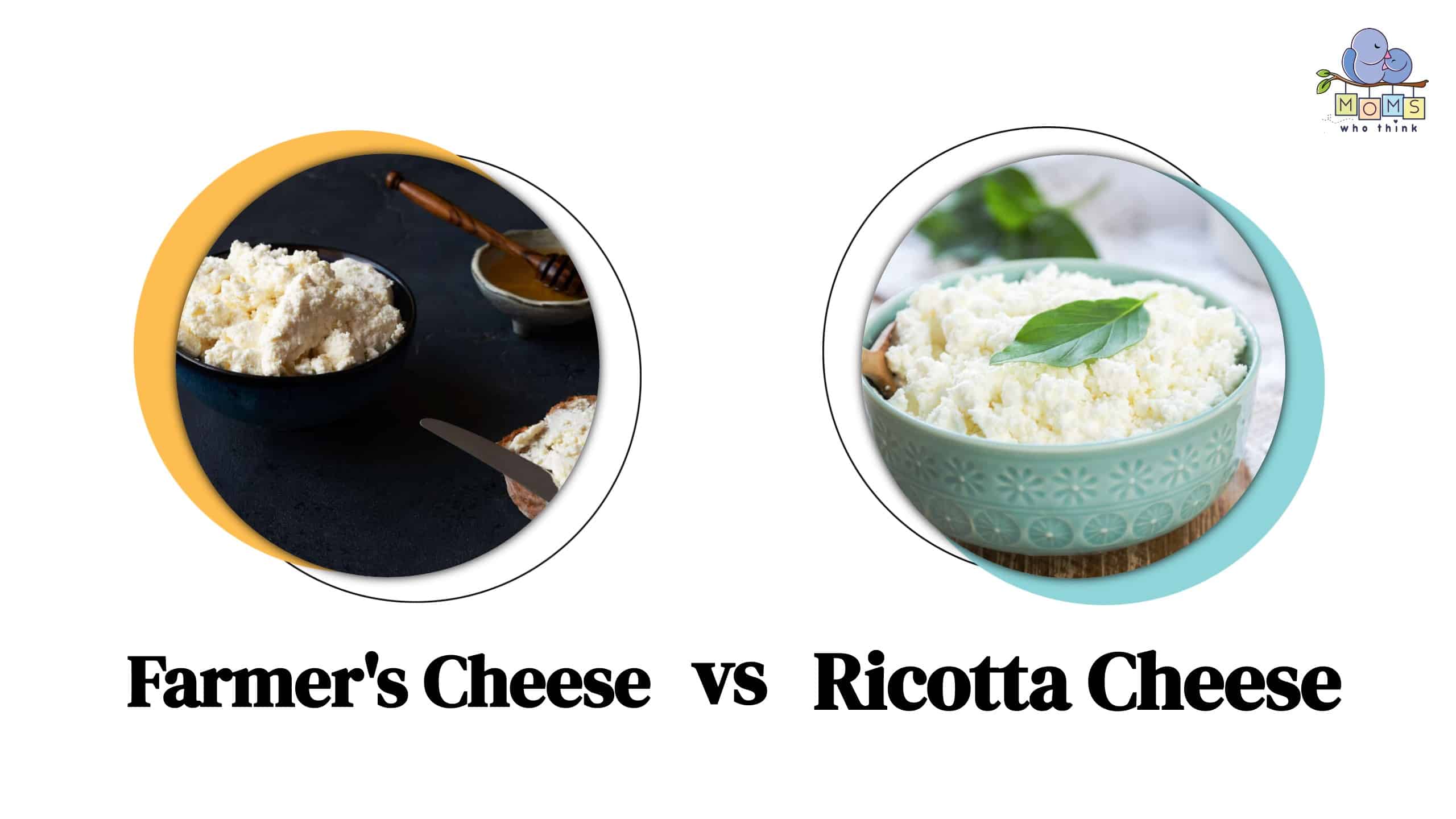Are you always on the lookout for quick and simple meal ideas that will keep your family happy and healthy? Cheese is often a go-to ingredient that can add flavor and richness to your recipes. Two types of cheese that are frequently used in recipes are farmer's cheese and ricotta cheese.
While these cheeses may seem similar at first glance, there are some key differences between the two. In this post, we'll take a closer look at what sets farmer's cheese and ricotta cheese apart, including texture differences, how they're made, and the best uses for each. Whether you're making a quick breakfast or preparing a family dinner, these cheeses are sure to become staples in your kitchen. Read on to discover the unique characteristics of farmer's and ricotta cheese.
- The must-have convenient reference guide for every home cook!
- Includes more than 8,000 substitutions for ingredients, cookware, and techniques.
- Save time and money on by avoiding trips to grab that "missing" ingredient you don't really need.
Farmer's Cheese vs. Ricotta: What Is the Difference?
The primary difference between farmer's cheese and ricotta is that ricotta is made from whey whereas farmer's cheese is made from milk. This difference in how they're made gives ricotta a mild, somewhat sweet flavor which compares to farmer's cheese having a more tangy flavor. Additionally, farmer's cheese is often lower in fat and calories than ricotta, making it a healthier option for those watching their diet.
Farmer's cheese is also more crumbly while ricotta tends to have a grainy texture. Overall, both cheeses have their own unique qualities and can be used in a variety of delicious dishes.
Let's dive into when to use each.
What is Farmer's Cheese?
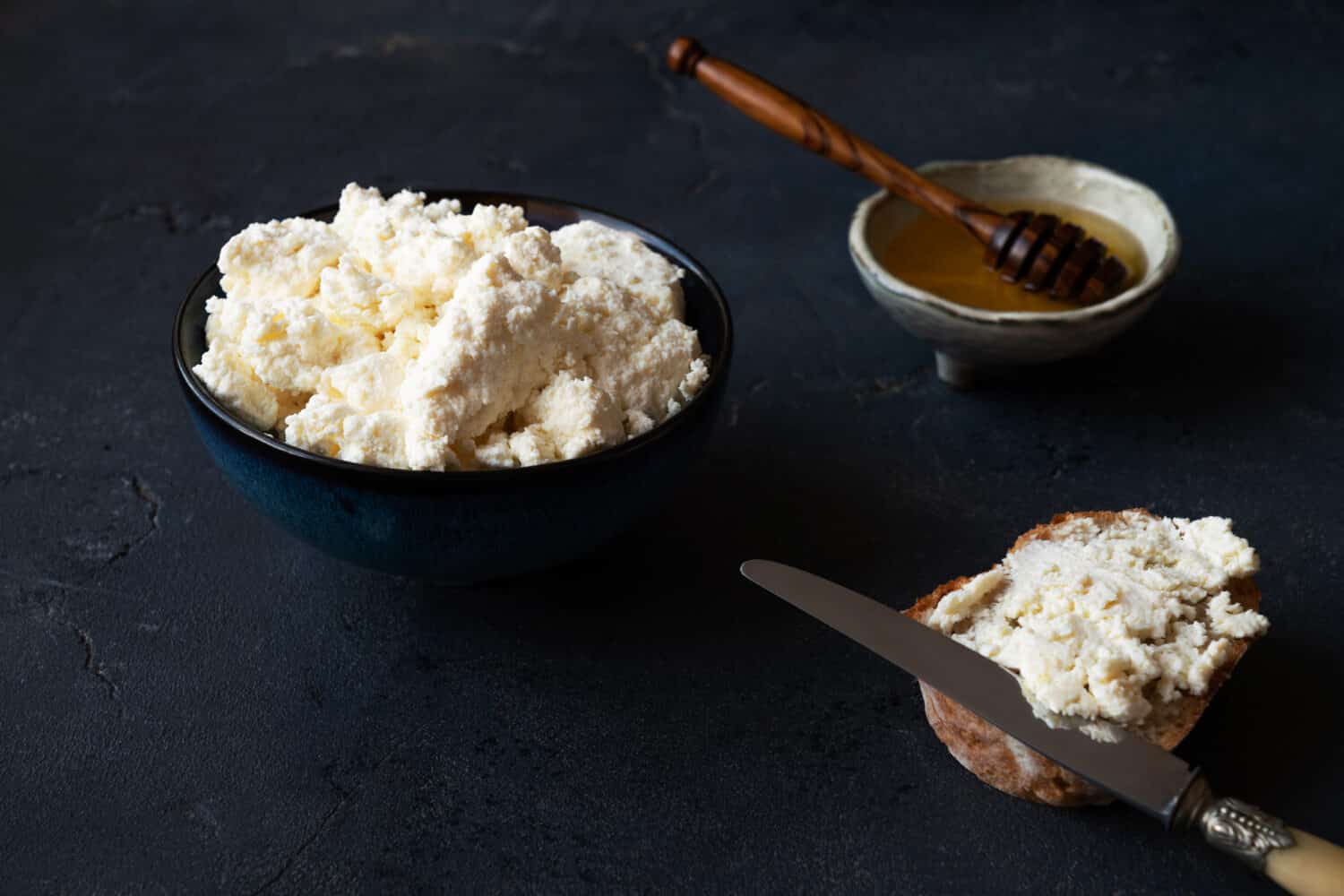
Farmer's cheese is popularly used as a spread of bread or crackers.
©Pedal to the Stock/Shutterstock.com
Farmer's cheese is a fresh, curd cheese that has a crumbly texture and mild, tangy flavor. It's made from cow's milk or a blend of cow's and goat's milk with simple enough ingredients that it can be made at home.
Origin
Because of its versatility and easiness to make, the exact origin of farmer's cheese is unclear, though European farmers have been making it for centuries as a way to put excess milk to use.
This cheese is very popular in Europe with European-style farmer's cheese (also called twarog or tvorog) found in Slavic and German communities. In the U.S., American-style farmer's cheese more closely resembles cottage cheese and is popular in Amish communities as well as in the Southern states (mostly for its use in cheese grits).
Flavor
Farmer's cheese has a mild, tangy taste that can be slightly sweet or savory depending on the type of milk used. This cheese tends to be milder in flavor because it's a fresh cheese and doesn't have the same sharpness that an aged cheese would have.
Texture and Appearance
One of the defining characteristics of farmer's cheese is its crumbly texture, which comes from the pressing process where liquid is removed from the cheese. Depending on how much liquid is removed and how the cheese is manufactured, the final product can range anywhere from slightly firm, to very crumbly. The cheese can also be made in different shapes and sizes, including rounds, blocks, and wedges.
How Farmer's Cheese is Made
Farmer's cheese is one of the simplest and easiest cheeses to make. While this cheese can be purchased from the store, you can also make it yourself.
You simply need milk (cow's milk is most generally used, but a combination of goat's and cow's milk can also be used), vinegar or lemon juice, and salt. After the cheese is heated, vinegar or lemon juice is added to create curds. The curds are strained away from the liquid and then squeezed into a mold. The more liquid that is removed, the more firm the cheese will be.
As mentioned, farmer's cheese is a fresh cheese, meaning that it doesn't need to be left to age. It can be made and consumed on the same day.
Popular Uses
Because this cheese is mild and fresh, it's extremely versatile. Farmer's cheese is most popularly used as a spread on crackers and bread, but it can also be used as a stuffing for vegetables or pasta. In Eastern European cuisine, it's used in dishes such as blintzes and salads. Eaten like yogurt, this cheese can be topped with honey, jam, and fresh fruit as well.
What is Ricotta Cheese?
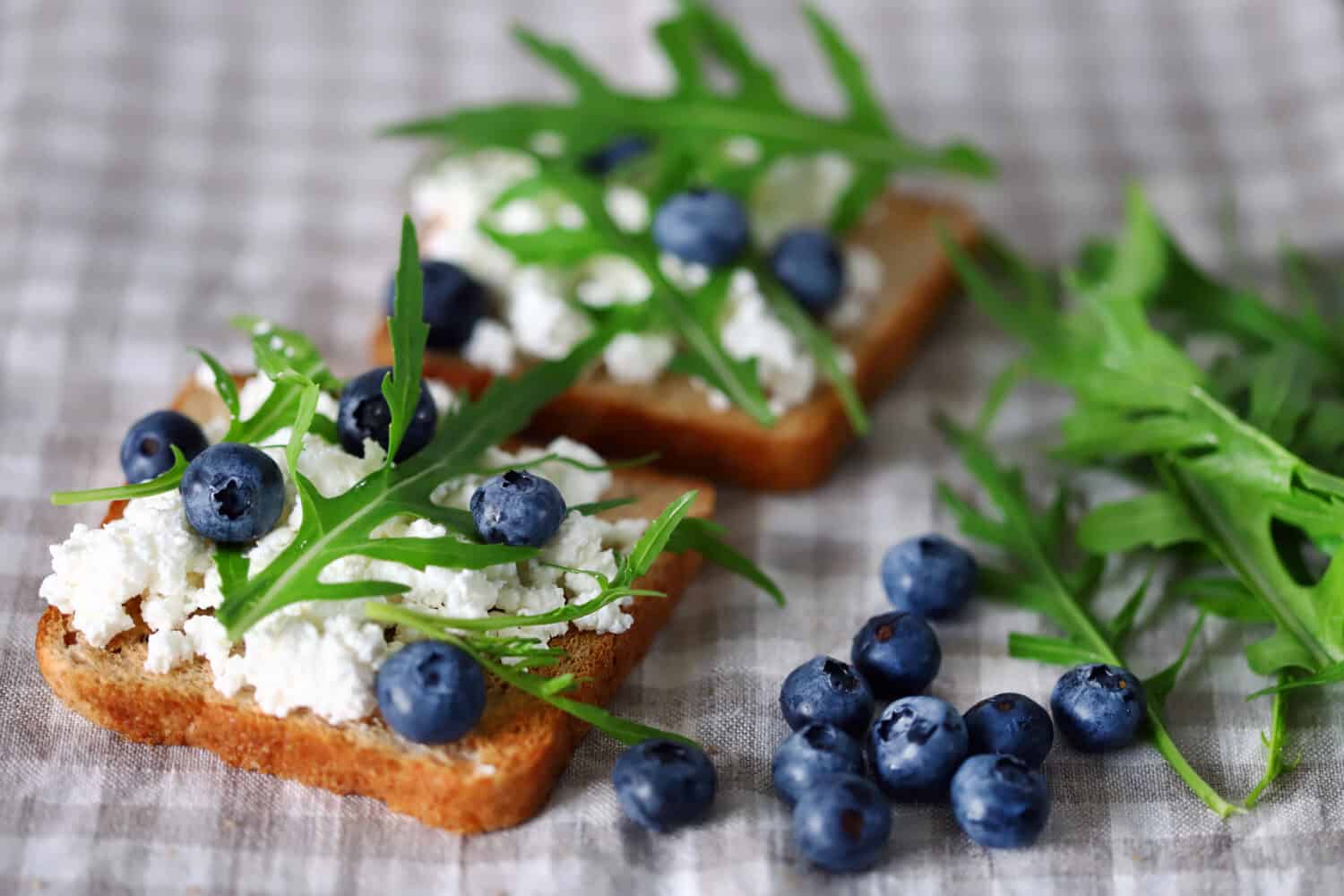
Ricotta is an excellent cheese to pair with sweeter dishes.
©Chatham172/Shutterstock.com
Ricotta cheese is soft and creamy with a mild, somewhat sweet flavor and grainy-like texture. Unlike farmer's cheese, ricotta is made from the whey that's separated from the curds during the cheese-making process.
Origin
According to Science Direct, ricotta originates from Italy and means “recooked” in Italian. This term refers to the fact that ricotta is a whey cheese, as in, it's made by reheating the whey left over from making other cheeses. In Italy and other parts of the world, this cheese is traditionally made from cow's, sheep's, or goat's milk. In the United States, it's most commonly made from cow's milk.
Flavor
It's important to note that there are various types of ricotta cheese. Fresh ricotta (which is what we're talking about here), is rich and creamy and has a mild taste with less tanginess than farmer's cheese. Aged ricotta, also known as ricotta salata, is drier, saltier, and has a stronger flavor. The flavor can also change depending on what kind of milk is used in the production process.
Texture and Appearance
Ricotta is known for its signature grainy-like texture. It's also soft, creamy, and light. The lightness comes from the cheese being lower in fat than others because it only contains the fat that's left over in the whey used to make it.
How Ricotta Is Made
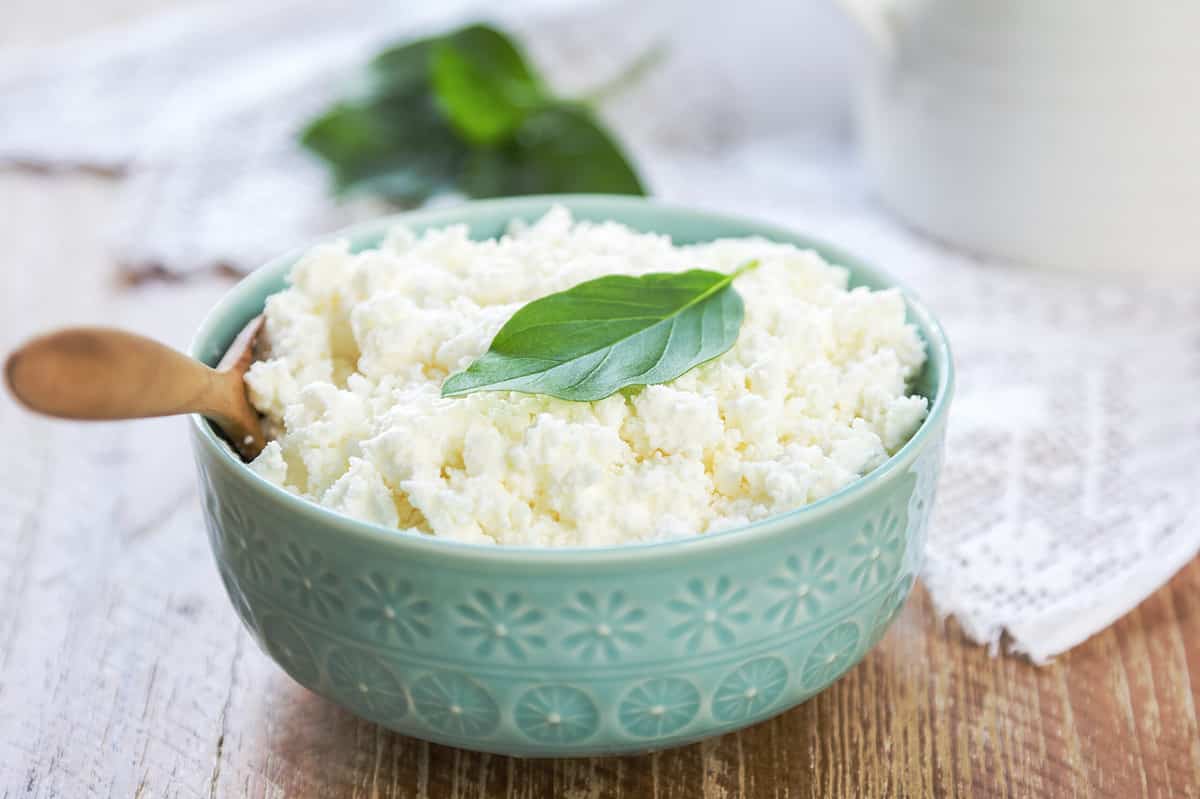
Homemade ricotta cheese
©vanillaechoes/Shutterstock.com
In the United States, fresh ricotta is made from whole cow's milk. An acid is added to the milk which creates curds. The curds are then skimmed off the top and what's leftover is ricotta.
In Italy and other parts of the country, however, ricotta is typically made with the whey that's leftover from other cheeses with a small amount of milk added. The leftover whey usually contains rennet already. It's then heated (which is where the “recooked” term comes into play), which creates curds. The curds are strained and formed together to make fresh ricotta.
As mentioned, there are various types of ricotta and each has a slightly different production process. While fresh ricotta is what we're talking about today, other aged and smoked variations also exist, including:
- Ricotta Salata, which is an aged and firmer, saltier version of the fresh cheese.
- Ricotta Infornata, a baked version of the cheese that is popular in Sicily.
- Smoked Ricotta, which has a smokey and savory flavor.
- Ricotta Forte, which has the strongest flavor due to the long aging process of about a year.
Popular Uses
Because of ricotta's versatility, it can be used in both savory and sweet dishes. It's often found in Italian dishes due to its Italian roots, and it is used in a variety of ways. Ricotta can be found as a filling for pasta dishes like ravioli and cannoli and as a topping for pizzas. It can also be found as an ingredient in desserts like cheesecake and tiramisu.
Can Farmer’s Cheese Be Substituted for Ricotta?
Yes, in most cases, farmer's cheese and ricotta can be used interchangeably in recipes as both cheeses have a similar mild, slightly sweet flavor and creamy texture.
Keep in mind, however, that the texture and moisture content between these two cheeses still varies slightly, which may affect your recipe. For example, ricotta typically has more moisture and is softer than farmer's cheese, which makes it a better choice for sweeter desserts and baked goods. Farmer's cheese, on the other hand, is a better choice for dishes that require a drier, crumbly texture.
In the end, while these two cheeses can typically be interchanged in recipes, you may need to adjust as necessary to achieve your desired outcome.
- The must-have convenient reference guide for every home cook!
- Includes more than 8,000 substitutions for ingredients, cookware, and techniques.
- Save time and money on by avoiding trips to grab that "missing" ingredient you don't really need.
Other Substitutes for Farmer's Cheese and Ricotta
If you find yourself in a pinch and without farmer's cheese or ricotta, there are a few other substitutes that you can use instead:
Cottage Cheese
This cheese has a similar texture and flavor to farmer's cheese, making it a good substitute. However, cottage cheese tends to be a bit tangier and has more moisture, so keep that in mind when substituting.
Cream Cheese
As the name implies, cream cheese has a creamy texture, which is what makes it a good substitute for ricotta or farmer's cheese in certain recipes, like cheesecake or dips. However, it does tend to have more of a tangy and rich flavor than either of these two cheeses.
Mascarpone
Mascarpone is a rich, creamy cheese that is often used in desserts like tiramisu. While the creamy texture makes it a good replacement in recipes that require a creaminess, it does have a different flavor profile than ricotta or farmer's cheese.
Feta Cheese
Feta offers the same crumbly texture as farmer's cheese which makes it a good substitute. However, it can be a bit tangier which can alter the taste of a recipe that requires milder cheese.
Keep in mind that substituting one of these cheeses for farmer's cheese or ricotta can alter the taste of your dish, so it's best to experiment in small batches to be sure your desired flavor is reached.
Farmer's Cheese or Ricotta Recipes
Either farmer's cheese or ricotta can be used in the following recipes:
Print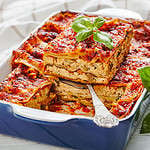
Villa Giardino Fresh Lasagna
- Yield: 6 servings
Ingredients
2 red bell peppers
2 green bell peppers
1 medium eggplant
2 medium zucchini (about 8 ounces each)
Olive oil cooking spray
1 tub (8 ounces) part skim ricotta cheese
1 cup shredded Parmesan cheese
1 cup part skim shredded mozzarella cheese
1 egg, lightly beaten
2 garlic cloves, minced
1 Tablespoon Italian seasoning
1 teaspoon salt
6 cups tomato basil spaghetti sauce
1 (9 ounce) package oven ready lasagna noodles
Instructions
1. Heat oven to 400 degrees F. Remove the seeds from the peppers. Cut each one in half, then cut into large chunks.
2. Trim ends from eggplant and zucchini then cut into slices about ¼ inch thick.
3. Lightly coat two large baking trays with the olive oil spray, then place peppers, eggplant and zucchini in a single layer divided between the two trays.
4. Spray olive oil evenly across all vegetables on each pan. Sprinkle salt and pepper to taste over all.
5. Roast for 25 minutes until vegetables are lightly browned. Remove from oven and set aside.
6. Reduce oven heat to 350 degrees F.
7. In a large bowl, combine the cheeses, egg, garlic, Italian seasoning and salt. Mix well to combine.
8. Lightly coat a 13×9 inch baking dish with olive oil spray.
9. Arrange a layer of the vegetables on the bottom, then pour 1 1/2 cups of the spaghetti sauce on top.
10. Top with a layer of lasagna, then spread a third of the cheese mixture on top.
11. Repeat until you have 3 layers of pasta. Finish by evenly spreading the last 1 1/2 cups spaghetti sauce on top.
12. Bake for 45 minutes until bubbling and lightly browned on top.
Nutrition
- Serving Size: One serving
- Calories: 464
- Sodium: 590mg
- Fat: 10g
- Saturated Fat: 5g
- Carbohydrates: 42g
- Fiber: 8g
- Protein: 21g
- Cholesterol: 37mg
- Broccoli Ricotta Mozzarella Stuffed Shells
- Skinny Italian Spaghetti Pie
- Italian Smothered Chicken Recipe
Final Thoughts
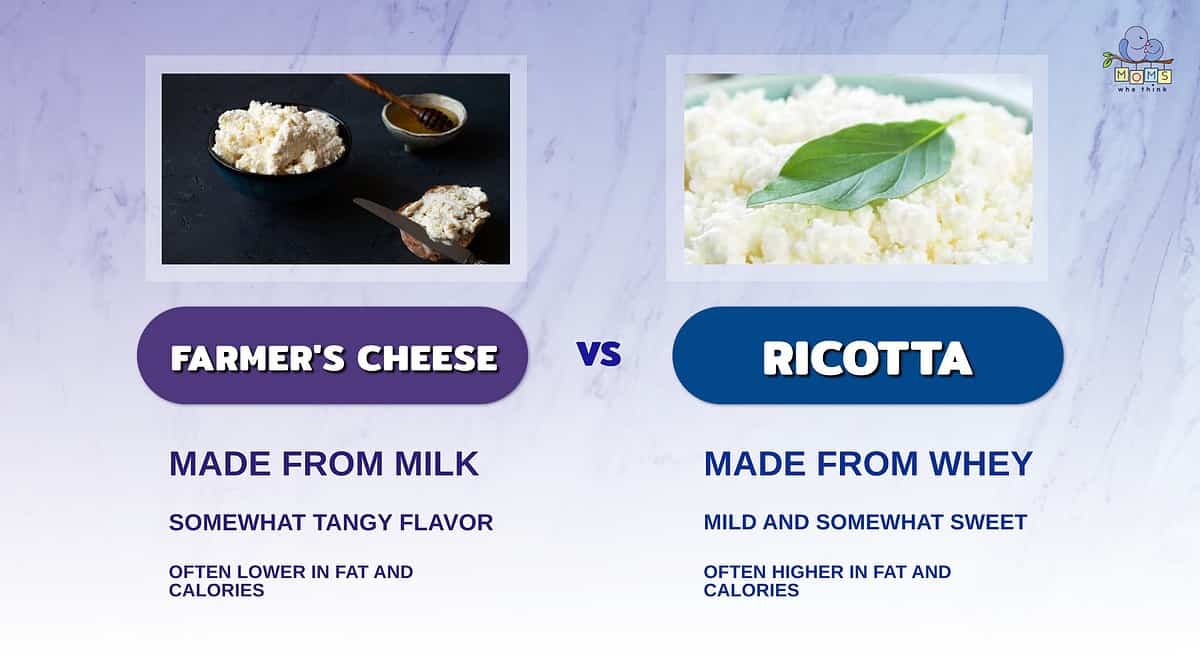
- A key difference between farmer's cheese and ricotta is in the ingredients. Farmer's cheese is made from milk, while ricotta is made from whey.
- This difference means that farmer's cheese has a somewhat tangy flavor, while ricotta is mild and slightly sweet.
- Farmer's cheese is often lower in fat and calories compared to ricotta. Still, cheese is something that you'll want to eat in moderation if you're dieting or otherwise watching your calories.
In conclusion, while farmer's cheese and ricotta have similarities in texture and taste, they also have notable differences including how they're made and how they're used in the kitchen. However, either of these fresh, mild-flavored cheeses can up-level your next recipe. Whether you're making a savory baked dish or a sweet dessert, these versatile cheeses can be used to add flavor, texture, and richness.
